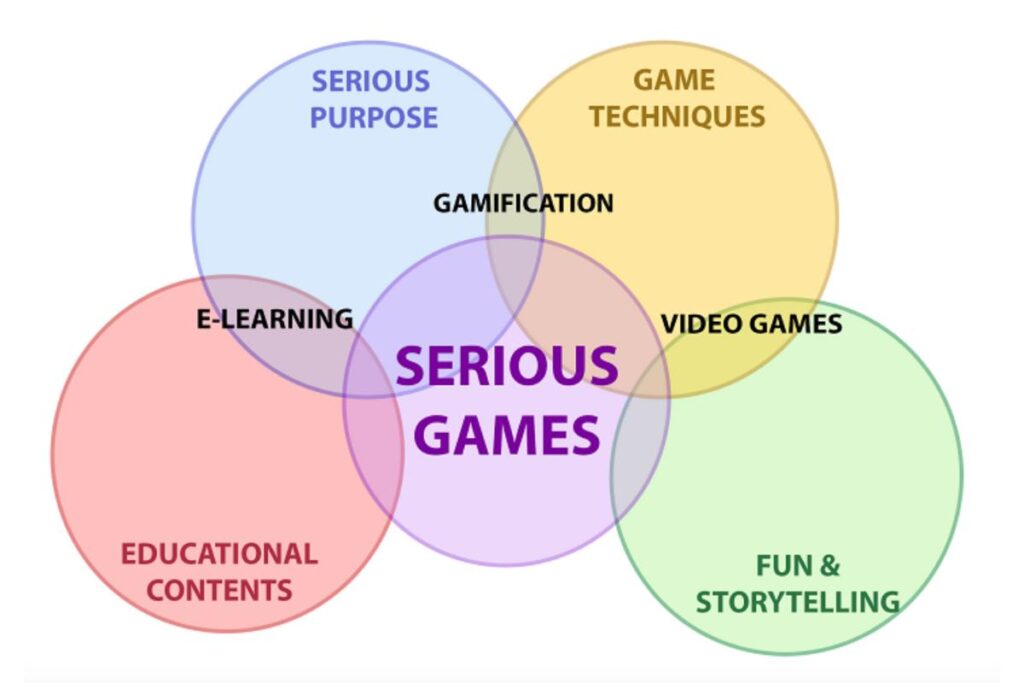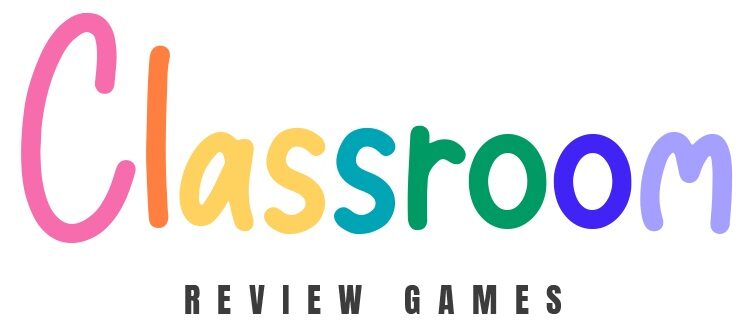Serious Games Examples
Serious games are games designed for a primary purpose other than pure entertainment. These games are used in various fields such as education, training, health care, public policy, and social change, leveraging the interactive and engaging nature of gaming to achieve specific learning or training objectives. They can simulate real-life processes or systems to provide users with hands-on experience and practical skills. For example, a serious game might simulate a medical procedure for training doctors, a complex ecosystem for educating students about environmental science, or a business environment for teaching management and decision-making skills.
Here’s how they work:
Educational Topics
Serious games in education are like regular games, but they have a special purpose. They are designed to teach you something. This could be many different things like math, science, history, or languages. For example, a game might be about solving math problems to move to the next level. Or, it could be a story game where you learn about history by being part of historical events.
Interactive Learning
In these games, you don’t just watch; you take part in the action. This means you make choices and do things in the game. For instance, you might have to answer questions, solve puzzles, or make decisions that affect the story. This interactive part is important because it makes learning fun and engaging. You learn by doing things, not just by reading or listening.
Feedback and Rewards
As you play, the game tells you how you are doing. This feedback can be in many forms, like scores, levels, or even virtual rewards. If you solve a math problem correctly, the game might give you points or unlock a new level. This feedback helps you understand what you are learning well and what you need to work on more.
Real-World Skills
Many serious games aim to teach skills that are useful in real life. For example, a game could teach you how to manage money or how to act in a job interview. These skills are not just academic; they are practical and can help you in daily life.
Customized Learning
One great thing about these games is that they can adapt to your level. If you find something easy, the game might make it harder. If something is too hard, the game can give you easier tasks. This way, the game stays challenging but not too difficult. It’s like having a teacher who knows exactly what you need.
In summary, serious games in education are a fun and effective way to learn. They combine the excitement of video games with the benefits of learning, making education an enjoyable experience.
Where Are Serious Games Used?
Unlike gamification, which refers to applying game-like elements to non-game activities to increase engagement and motivation, serious games are fully developed games designed for educational or training purposes.
Here are some of the key areas where they are commonly found:
Schools and Universities
In schools and universities, serious games are used to make learning more interesting and interactive. They can help students understand complex subjects by presenting them in a fun, game-like environment. For example, a history game might let students experience historical events, or a science game could simulate experiments that are too dangerous or expensive to do in real life.
Examples:
- Math Blaster: A popular game that teaches children mathematics. It turns math problems into fun challenges.
- Duolingo: While more of an app than a traditional game, Duolingo uses game-like elements to make learning new languages engaging and fun.
Corporate Training
Companies use serious games to train their employees. These games can teach various skills like teamwork, leadership, and problem-solving in a way that’s engaging and practical. For instance, a game might simulate a business scenario where employees have to work together to solve a problem.
Examples:
- SimuLearn’s Virtual Leader: This game teaches leadership and communication skills by simulating real-life business scenarios.
- IBM’s INNOV8: A game designed to teach business process management and decision-making in a corporate environment.
Healthcare
In healthcare, serious games are used for both patient education and training healthcare professionals. Patients might play games that teach them about their health conditions or how to manage their treatment. Healthcare professionals might use games to practice medical procedures or to improve their diagnostic skills.
Examples:
- Re-Mission: A game designed for young cancer patients. It helps players understand and manage their illness by controlling a tiny robot that fights cancer cells.
- Lumosity: A brain-training program with games designed to improve cognitive abilities like memory and attention.
Military Training
The military uses serious games to train soldiers in various skills, from combat tactics to peacekeeping operations. These games provide a safe and controlled environment where soldiers can practice and learn without real-world risks.
Examples:
- America’s Army: Developed by the U.S. Army, this game provides a virtual environment for military training and recruitment.
- Virtual Battlespace: Used by various military organizations, it simulates combat scenarios for training purposes.
Public Awareness and Social Issues
Serious games are also used to raise awareness about social issues and encourage positive social change. For example, a game might be designed to educate people about environmental conservation or to promote understanding of social challenges like poverty or immigration.
Examples:
- Darfur is Dying: A game that provides a glimpse into the harsh realities of the Darfur refugee crisis.
- Papers, Please: A game that explores the emotional toll of working as an immigration officer and making decisions that affect the lives of virtual people.
Personal Development
They are also increasingly used for personal development, helping individuals improve skills like time management, financial planning, or even learning new languages.
In all these areas, the goal of serious games is to provide an engaging, interactive way to learn and practice skills that are valuable in real life. By combining the appeal of gaming with educational content, they offer a powerful tool for learning and development.
Examples:
- SuperBetter: Designed to help players overcome personal challenges and build resilience in the face of difficult situations.
- The Game of Life: While traditionally a board game, its digital versions simulate various life events and financial decisions, teaching players about life management.
Serious Games or Gamification?

Serious games are complete games designed for purposes beyond just fun, like education or training. Imagine a video game that teaches you how to perform surgery or manage a business. Gamification, on the other hand, takes elements from games, like points, levels, or badges, and adds them to non-game activities to make them more engaging. For example, getting points for finishing tasks on a to-do list app. So, while serious games are full games with specific goals, gamification is about making regular tasks feel more like playing a game.
To figure out if something is a serious game or gamification, think about what it’s mainly for. If it’s a whole game made to teach you something or help you practice a skill, like a flight simulator for pilots, it’s a serious game. But, if it’s just adding game-like rewards (like points or badges) to regular activities, like getting points for walking more steps each day, that’s gamification. So, serious games are all about learning through playing a full game, while gamification is about making everyday tasks more fun with game elements.
